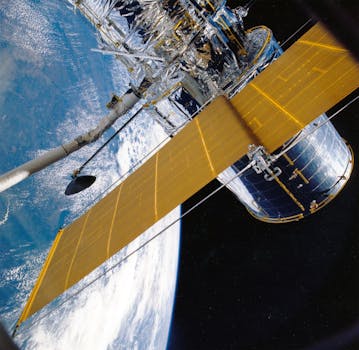
LEO Satellites: Revolutionizing the Future of Space Technology with Low Earth Orbit
LEO satellites, or Low Earth Orbit satellites, are a type of satellite that operates at an altitude of around 160 to 2,000 kilometers above the Earth’s surface. This low orbit allows LEO satellites to provide faster and more reliable internet connectivity, as well as enable a wide range of applications such as Earth observation, communication, and navigation. In this article, we will explore the world of LEO satellites and their potential to transform the space industry.
What are LEO Satellites?
LEO satellites are a type of satellite that operates in a low earth orbit, which is much lower than the orbit of traditional geostationary satellites. This low orbit allows LEO satellites to provide faster and more reliable internet connectivity, as well as enable a wide range of applications such as Earth observation, communication, and navigation. LEO satellites are typically smaller and less expensive than traditional satellites, making them more accessible to a wider range of organizations and individuals.
Advantages of LEO Satellites
LEO satellites have several advantages over traditional satellites. One of the main advantages is their low latency, which allows for faster and more reliable internet connectivity. LEO satellites also have a lower cost per unit of bandwidth, making them more affordable for organizations and individuals. Additionally, LEO satellites can provide higher resolution images and more precise data, making them ideal for applications such as Earth observation and navigation.
Applications of LEO Satellites
LEO satellites have a wide range of applications, including internet connectivity, Earth observation, communication, and navigation. One of the most promising applications of LEO satellites is providing internet connectivity to remote and underserved areas. Companies such as SpaceX and OneWeb are launching constellations of LEO satellites to provide global internet coverage. LEO satellites are also being used for Earth observation, providing high-resolution images and data for applications such as agriculture, forestry, and disaster response.
Challenges and Future Developments
Despite the many advantages and applications of LEO satellites, there are also several challenges and future developments to consider. One of the main challenges is the risk of collisions between LEO satellites and other objects in space. As the number of LEO satellites increases, the risk of collisions also increases, which could have serious consequences for the space industry. To mitigate this risk, organizations such as the Federal Aviation Administration (FAA) and the European Space Agency (ESA) are developing regulations and guidelines for the responsible operation of LEO satellites.




